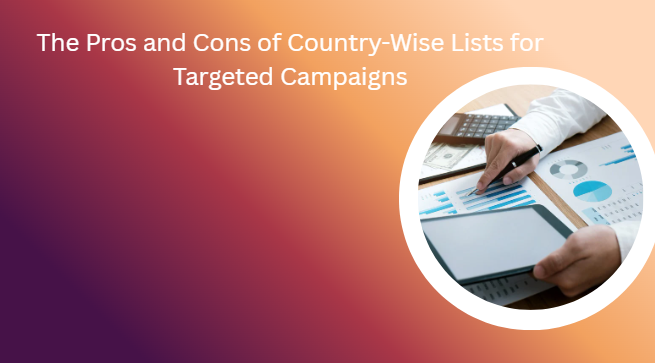Benefits of Using Country-Wise Lists in Email Marketing
The Pros and Cons of Country-Wise Lists are largely outweighed by the benefits they bring to marketing personalization and performance. One key advantage is the ability to tailor content and offers according to regional preferences and cultural nuances, which significantly improves recipient engagement. Additionally, country segmentation facilitates compliance with various country wise email marketing list data privacy laws such as GDPR in Europe and CASL in Canada, reducing legal risks. Time zone differences can be addressed effectively by scheduling emails to arrive during peak engagement periods in each country. This approach also helps reduce unsubscribe rates by minimizing irrelevant or poorly timed messages. Altogether, these benefits contribute to higher open rates, click-throughs, and ultimately, greater ROI.

Challenges and Limitations of Country-Wise Lists
Despite the clear benefits, The Pros and Cons of Country-Wise Lists include notable challenges that marketers must manage carefully. Maintaining accurate location data can be difficult due to factors such as VPN usage, mobile users, and outdated subscriber information. Legal compliance requires constant monitoring of country-specific regulations, which vary widely and may change frequently. Managing multiple segmented campaigns increases operational complexity, demanding more sophisticated marketing automation tools and expert oversight. Scheduling messages across different time zones requires meticulous planning to avoid sending emails at inconvenient times. Moreover, cultural differences can be subtle and difficult to capture fully, making localization efforts demanding and resource-intensive. These limitations mean that while country-wise lists are powerful, they necessitate significant investment and strategic planning.
Best Practices for Managing Country-Wise Email Lists
To leverage the full potential of The Pros and Cons of Country-Wise Lists, marketers should follow several best practices. First, ensure the accuracy of country data by combining explicit user inputs with reliable IP-based geolocation tools and regular data cleansing. Second, invest in genuine localization beyond translation, adapting messaging, imagery, and offers to each country’s culture. Third, embed compliance into workflows by implementing country-specific consent management and privacy policies. Fourth, use advanced marketing automation platforms capable of handling segmented sends with optimal timing for each region. Finally, continuously analyze campaign metrics by country to identify performance trends and optimize future communications. Adopting these strategies helps marketers harness the benefits of country-wise lists while minimizing potential pitfalls.
Future Outlook and Trends in Country-Wise Email Segmentation
The Pros and Cons of Country-Wise Lists will continue to evolve as technology and consumer expectations advance. Artificial intelligence and machine learning promise to enhance segmentation accuracy and automate localization at scale. Data privacy regulations will become more stringent, requiring marketers to implement transparent and ethical data practices. The rise of global e-commerce heightens the importance of precise geographic segmentation, driving demand for country-wise email lists. However, managing diverse legal frameworks and cultural nuances will remain complex, underscoring the need for balance between automation and human insight. Looking ahead, successful marketers will be those who adapt to these changes by investing in technology, compliance, and culturally intelligent strategies to maintain relevance and engagement across international markets.